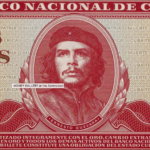Unanswered Letters
For many years, my mum has donated to the ‘Sponsor a Village’ programme run by the International Non-Governmental Organisation (INGO) ActionAid. Every month money is transferred from her bank account to ActionAid, who use the funds to support the needs of a village in Bangladesh. However, a few years ago, she received a letter informing her that the charity had ceased their village sponsorship programme and were instead transferring her donations to their ‘Sponsor a Child’ initiative.
Along with this letter, she received the name and photograph of the child she had been partnered with and a description of her life story. Twice a year my mum now receives an envelope stamped with the ActionAid logo which contains a printed report on the village’s progress, a handwritten letter from the child, and several drawings done in colourful crayon. She also receives the occasional photo, for example to mark an important life milestone. My mum has the option to write back to the child, thanking her for the drawings and in return give her updates on our family and our life.
The perfect gift is one that is unconstrained and constraining; not locking giver or receiver into a relationship of obligation (Carrither 1990). Financial donations to charities are an example of such a gift, given by donors without the expectation of return from the recipient. Money, as the least personal gift, was transferred from my mum’s bank account by standing order automatically each month. After this, she was free from obligation and the village, in accordance with ActionAid’s partnership ethic, was free to spend the money to meet their needs. Feeling good in the implicit knowledge that her actions were morally good, “The donee’s thanks are but the ghost of a reciprocal bond” (Noonan 1984: 695).
However, when switched to the child sponsorship programme, she began to receive letters and drawings in return for her donations. The neatly formed letters and colourful drawings enable us to imagine the child that made them and the effort that it must have taken. The occasional spelling mistakes remind us that she is writing in her second language and making the most of the opportunity to learn that has been given to her. The material qualities of these gifts make them highly personal and thus valuable objects (Gell 1998). Suddenly, my mum’s obligations had been extended beyond just the automatic transfer of money, she was expected to reply.
However, my mum has never replied to the girl’s letters. This failure to reciprocate is a clear source of guilt when I ask her about it; she imagines this girl sat in a classroom in Bangladesh emptyhanded as all her friends receive letters from mysterious donors. Working full-time and running a household, she feels she has very little time to spend writing back.
The pictures and letters sit on our kitchen counter for several days occasionally being looked over by my family. These bits of papers inevitably ended up in the pile of cookery books, magazines, and completed shopping lists beside the oven before being sorted into an undetermined drawer in the office. Thus, they are read and admired as intended, kept in a social space for some time, before being hidden so as not to be a reminder of guilt. However, they are never destroyed or disposed of, reflecting the valuable nature of these objects. Thus, the letters follow an acceptable itinerary through the space of the house and over time (Fontijin 2013).
There appears to be a tension between the anonymous gift and the gift as personal token, creating anxiety for the donor. Commodities have typically been classed as impersonal and anonymous (Sleeboom-Faulkner 2014). Conversely, a gift has been described as personal, generating a relation of mutual obligation between donor and recipient. Donating money was an anonymous gift that was unconstrained and unconstraining (Carrither 1990). However, ActionAid have invested interest in transforming the relationship between donor and donee from the “ghost” (Noonan 1984: 695) of anonymous bank transfers to the very tangible exchange of personal letters. By cementing this personal relationship, ActionAid secure funding from their donors. They thus become mediators and enforcers of the gift.
My mum says she can never stop her donations to the child. Once again, she imagines the child being told her donor has cut the funds, leaving her penniless and wondering why her gift of letters and drawings were never reciprocated. Just as she is obligated to donate money to ActionAid, the child is obligated to write personal letters and make drawings to send in reply. From being an anonymous monetary donation that leaves both parties free, it has become a personal gift where donor and recipient are bound in a constrained and constraining social relationship.
Contributed by TashDurie on 19/01/2022







Bibliography
Carrier, J. 1990. Gifts in a world of Commodities: The Ideology of the Perfect Gift in American Society. Social Analysis 29: 19-37.
Fontijn, D. 2013. Epilogue: Cultural Biographies and Itineraries of Things: Second Thoughts. In Hahn, H. & Weiss, H. (eds) Mobility, Meaning and the Transformations of Things.
Noonan, J.T. 1984. Bribes. Berkeley: University of California Press.
Sleeboom -Faulkner, M. 2014. The Twenty-First Century Gift and the Co-Circulation of Things. Anthropological Forum 24 (4): 323-337.